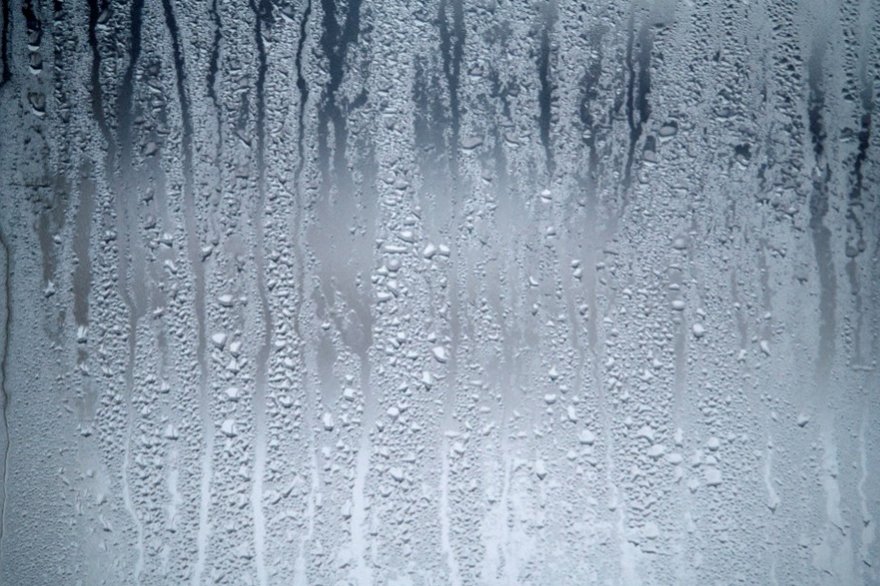How to Deal with Window Condensation
Let’s talk about condensation on your windows – what causes window condensation and how can you reduce it?

KEY TAKEAWAYS
- Learn what causes condensation and how to reduce it on your windows.
- Find out why condensation might not be as bad as you think.
- Discover tips for dealing with window condensation inside and outside your home.
It’s not fun to peer through hazy windowpanes caused by window condensation. Before we discuss how to reduce condensation on your windows, it’s important to understand what it is and how it’s caused. It turns out condensation might not be as bad as you think.
What is condensation?
Condensation is when water droplets collect on a cold surface because there is humid air in contact with it. Condensation often occurs on windows because their surfaces are colder than the walls with insulation.
To reduce condensation on windows, it’s critical to first identify where the condensation is occurring. Is it on the inside of the window, the outside of the window or between the window panes? Let’s explore the causes of each area of condensation and tips to help prevent it.
What causes condensation on the inside of windows?
Condensation on the interior of windows and doors occurs when warm, humid air comes into contact with cool glass. This is especially common in the winter when outside air is cold and dry, and the indoor air is warm and humid. Even if you aren’t running a humidifier, everyday activities like bathing, cooking and even breathing all contribute to the humidity in your home.
Replacing drafty windows and doors or installing a new roof or siding reduces air infiltration into your home, making a tighter seal. This tighter seal is great news for your energy costs, but a tightly sealed home also retains more humidity, which means condensation on colder surfaces in the home may occur more frequently after these improvements. Persistent indoor window condensation can lead to the growth of mold or mildew, which thrive in damp environments and on organic materials, like wood. Think of condensation on your windows as an indicator to reduce the humidity in your home before bigger issues occur.
Reducing Winter Window Condensation Inside Your Home
Condensation on the interior side of your windows is most common in the winter. As interior air becomes drier or as the glass surface becomes warmer, condensation begins to evaporate. Try these simple ways to help cut down on the humidity in your home.
Use a Portable Dehumidifier or Install a Whole-Home Dehumidifier
One way to reduce air moisture in your home is to use a dehumidifier. Dehumidifiers are electrical devices that help extract water from the air. Many people purchase dehumidifiers to eliminate musty odors and prevent mildew, mold and bacteria, but dehumidifiers can also be used to reduce condensation on windows.
Run Kitchen and Bathroom Exhaust Fans
Every time you cook or shower, moisture is released into the air. Sometimes it’s tough for moisture to easily escape from your home – especially if you have a new construction home that’s tightly sealed and retains even more moisture than older homes. When cooking, keep excess humidity contained by covering pots and pans. Run the kitchen exhaust fan to help remove moisture from the air. The same goes for bathroom fans. Leave the bathroom fan on during and after a shower to help circulate humid air out of your home. We recommend running exhaust fans for about 20 minutes after you cook or shower.
Leave Interior Doors Open and Circulate the Air
Another way to help reduce window condensation is by circulating the air around your home. Leave interior doors open throughout your home to prevent humidity from building up in one space. Turn on ceiling fans, even in the winter, to help move air around and push warm air down from the ceiling. If it’s not too cold out, you can also circulate air by opening your windows. This will let out some of the moist air that may be trapped in your home.
What causes condensation on the outside of windows?
Exterior condensation generally occurs in the summer months when outside humidity levels are higher. Exterior window condensation forms in the same way as roomside condensation when the temperature of the glass is cooled and comes into contact with warm, humid air.
When your window glass is colder than the dew point outside, you’re likely to see condensation, or dew, on the exterior of your window. Dew occurs naturally when the air becomes completely saturated with water. There are three main conditions that cause exterior window condensation: high outdoor humidity, little or no wind, and a clear night sky. Homeowners are more likely to see exterior window condensation early in the morning after a cool night. As the sun shines and begins to warm up the glass, the dew on the outside of your windows will evaporate.
Reducing Window Condensation Outside
Condensation on the outside of windows is nothing to worry about. In fact, it means your home is quite efficient. Nonetheless, here are a couple ways to reduce condensation on the exterior of your windows.
Trim Shrubbery Near Windows or Doors
Trim shrubbery near windows or doors as this will help promote air circulation. It will allow the sun to warm up the windows so that the condensation evaporates a little more quickly. Just like dew evaporates off your grass as the temperature outside warms up, so will it evaporate off your windows as well.
Raise the Temperature Setting on Your Air Conditioner
Raise the temperature setting on your air conditioner to help keep your window glass at a warmer temperature. Think about drinking a cold glass of lemonade outside on a hot summer day. The surface of the glass gets wet when warm air encounters the cool surface. Simply raising the temperature of the glass will help prevent condensation.
What causes condensation between window panes?
A seal failure is the primary reason why windows fog between the panes. A leak in the seal allows moisture to seep in between the glass. If you notice condensation between the glass of your window, it’s probably time for window replacement.
Contact your local Pella representative to schedule a free, in-home consultation and discuss solutions that might be right for you.
For more information about addressing condensation and its effect on windows and doors, download the Pella Owner’s Condensation Manual.


